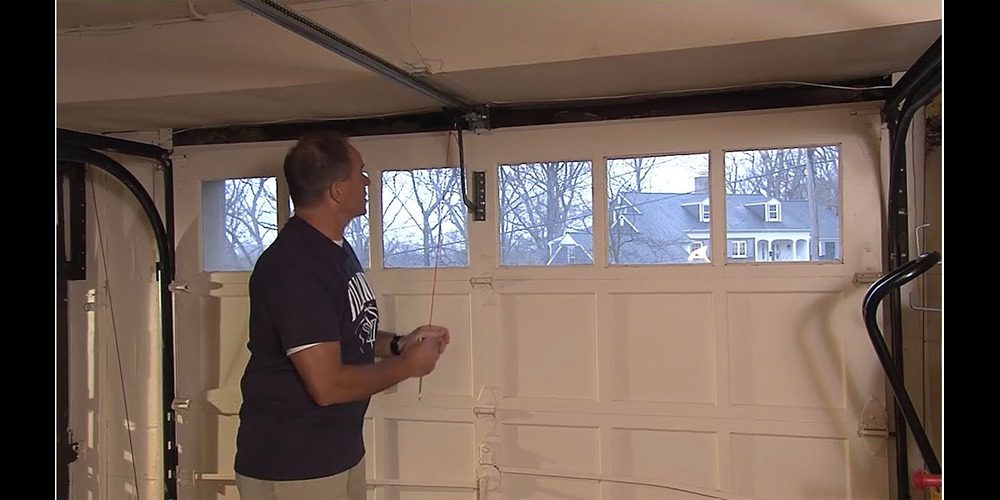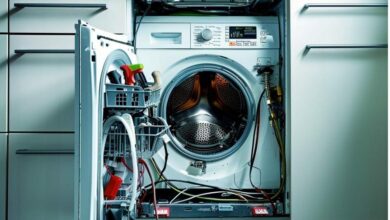10 Easy Steps to Repair Your Garage Door

Dealing with a malfunctioning garage door can be frustrating, not to mention a security risk to your home. However, before you call in the professionals, there are several steps you can take to troubleshoot and potentially repair your garage door yourself. With the right tools and a bit of patience, you can address common issues that may prevent your garage door from operating correctly.
This guide will walk you through 10 easy steps to repair your garage door, ensuring it functions smoothly and securely once again.
- Inspect the Door
Start by conducting a thorough inspection of the entire garage door. Look for signs of wear and tear, including broken springs, loose hardware, or damaged panels. Make note of anything that looks unusual or out of place, as this will help you identify what needs repair.
- Tighten Up Hardware
Over time, the hardware on your garage door can loosen due to the vibrations caused by daily operation. Use a socket wrench to tighten all bolts and screws on the door and track. Pay special attention to the brackets holding the door tracks to the walls and ceiling, as well as the fasteners anchoring the garage door opener unit.
- Check the Springs
Garage door springs are under a lot of tension and can be dangerous if they break. Carefully inspect the springs for signs of wear or damage. If you notice any issues, it’s best to call a professional for replacement, as handling springs can be risky without the proper tools and expertise.
- Lubricate Moving Parts
To ensure smooth operation, lubricate all moving parts of your garage door at least once a year. Use a high-quality silicone spray or garage door lubricant on the rollers, hinges, tracks, and springs. This can prevent rusting and reduce the noise generated during door operation.
- Align the Tracks
Ensure the tracks on either side of the door are properly aligned. They should be perfectly vertical and the same height on the walls. If the tracks are misaligned, loosen the screws holding the mounting brackets and gently tap the tracks back into the proper position before retightening the screws.
- Test the Door Balance
If your garage door is not properly balanced, the opener will have to work harder, which can shorten its lifespan. Disconnect the opener by pulling the release handle (usually a red cord), and manually lift the door halfway up. If it doesn’t stay put, the springs are likely unbalanced and may need adjustment or replacement.
- Inspect and Replace the Rollers
The rollers, whether steel or nylon, should be inspected twice a year and replaced every seven years or sooner if they are worn, chipped, or cracked. Remove and replace any damaged rollers by removing the brackets holding them to the door (except the bottom one, which is attached to the cable).
- Replace the Weatherstripping
If the rubber weather seal strip on the bottom of your door is brittle or cracked, replace it to keep out water, snow, and cold air. Weatherstripping can be purchased at hardware stores and cut to size, then slid into the grooves on the bottom of the door.
- Check the Cables and Pulleys
Examine the cables and pulleys connected to the bottom roller brackets on your garage door. These components are under high tension and can be dangerous, so if you notice any damage, consider hiring a professional for garage door repair Pittsburgh to handle the replacement safely.
- Test the Auto-Reverse Safety Features
Modern garage doors are equipped with auto-reverse safety features that prevent the door from closing if something obstructs its path. Place a piece of wood or a brick on the ground in the path of the door to test this feature. If the door does not automatically reverse upon hitting the obstruction, the opener’s sensitivity may need adjustment or repair.
FAQs about Garage Door Repair
How often should I perform maintenance on my garage door?
It’s recommended to inspect and perform basic maintenance on your garage door at least once a year. This includes lubricating moving parts, checking for wear and tear, and ensuring the door is properly balanced.
Can I replace garage door springs myself?
Due to the high tension under which garage door springs operate, it’s generally advised to have a professional replace them to avoid injury.
Why won’t my garage door open all the way?
This could be due to several issues, including misaligned tracks, worn springs, or problems with the door opener. Start by checking these areas for any apparent issues.
How do I know if my garage door opener needs to be replaced?
If your garage door opener is more than 15 years old, fails to open the door consistently, makes excessive noise, or lacks modern safety features, it might be time for a replacement.
What should I do if my garage door is off its track?
If your garage door has come off its track, it’s important not to operate it to prevent further damage. You can attempt to realign the door yourself if you feel confident, but often, this situation requires professional repair to ensure it’s done safely and correctly.
Conclusion
Repairing your garage door can seem like a daunting task, but by following these 10 easy steps, you can address common issues and ensure your door operates smoothly and safely. Remember, while many repairs are straightforward and can be done yourself, some situations, like dealing with high-tension springs or significant structural damage, are best left to professionals.
Regular maintenance and prompt attention to any problems can help extend the life of your garage door and prevent costly repairs down the line.
Read More From Techbullion





